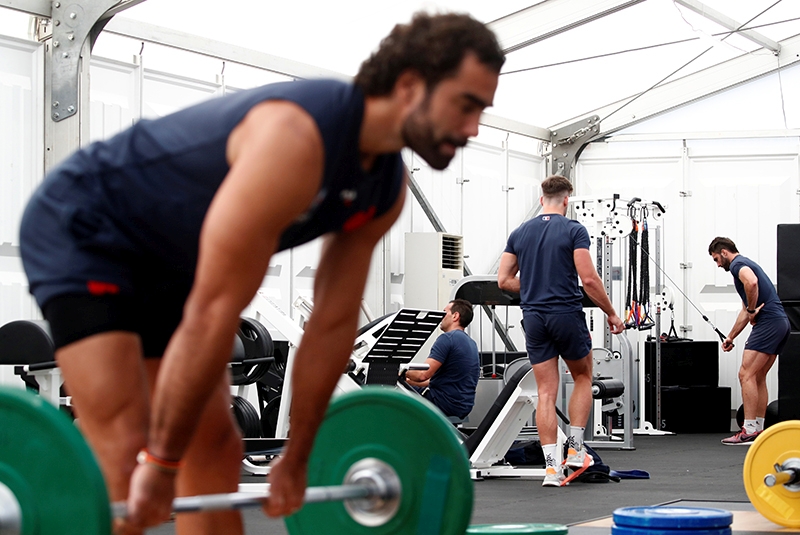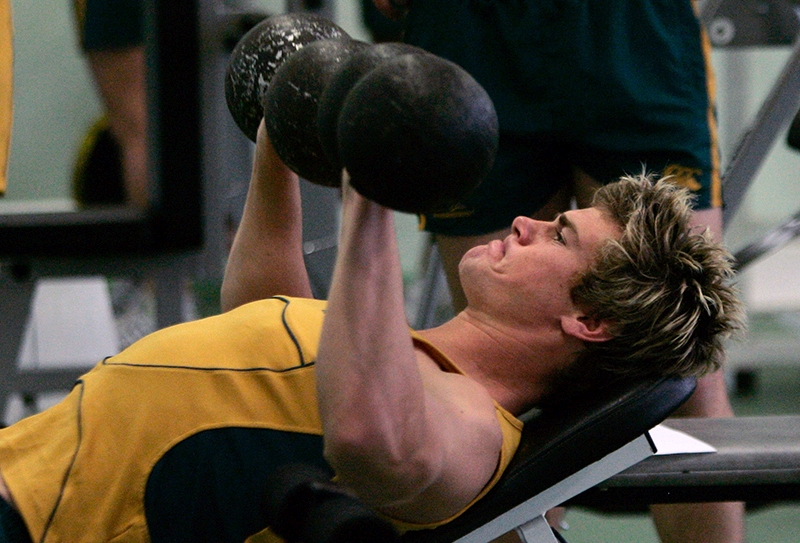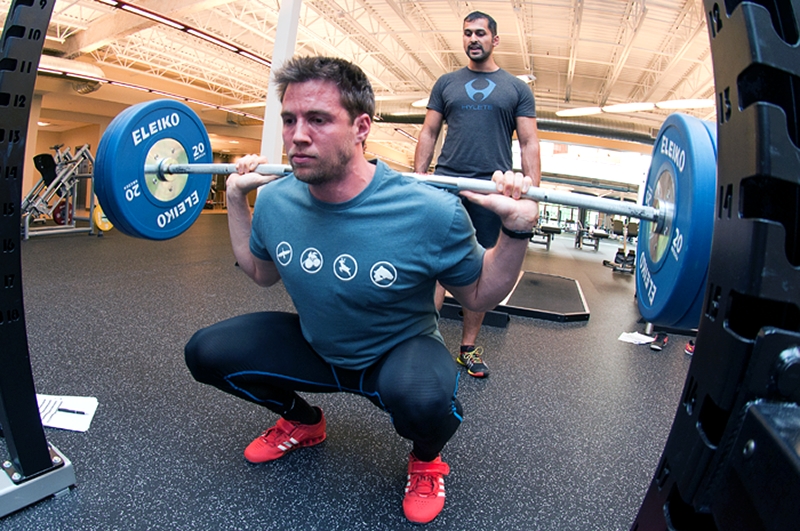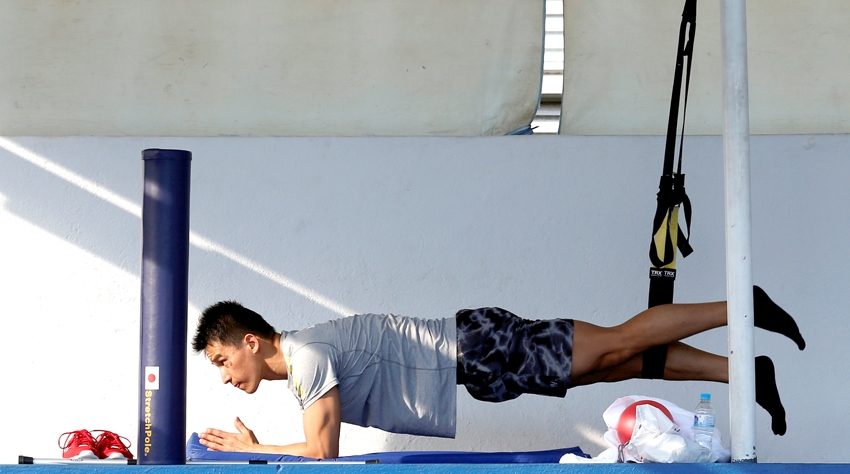You are viewing 1 of your 1 free articles. For unlimited access take a risk-free trial
In-season strength training for a competitive advantage?

New research on in-season strength training suggests that athletes and coaches might need to rethink the traditional approach to yearly training structure
It's spring time and although many people across the globe are still living under some kind of coronavirus restrictions, it’s still the time of year when thoughts are inevitably turning to the competitive season ahead. For many sportsmen and women, the traditional overall structure to each season’s training program can be very roughly approximated to something like this:- Off-season/transition – initial rest and recovery then a combination of strength training combined with some aerobic training (to prevent fitness levels from declining too much) and for team sports players, perhaps some skill training to keep techniques reasonably well honed.
- Pre-season/preparatory – mostly base training, consisting of a steady increase in training volume to develop the foundations of aerobic fitness for the season ahead. May also include some strength training and some skill work.
- Sharpening – a reduction in training volume but an increase in quality, with a growing emphasis on speed and skills.
- Competitive – priorities switched to peaking for key events. Training dialed down to allow for and fit in with races.
Off-season strength logic
For many athletes, winter/off-season strength training makes a lot of sense because it doesn’t interfere with in-season training or competition. Indeed, conventional wisdom says that a winter strength program (when short days and poor weather can make outdoors training difficult) followed by base training beginning early in the spring is the perfect recipe for success. However, while this seems intuitively correct, some sports science experts have wondered if an on-off approach to strength training really is the best route to competitive-phase performance, and whether a more ‘all year-round’ approach might be more productive. The reasoning is that not only could a significant amount of hard-earned strength gains be lost once strength training is abandoned in the spring, but also that when strength training is performed, the strength gains generated seem to translate almost immediately into better performance. Some earlier research a decade ago on well-trained cyclists illustrates this well(1) The cyclists were split into one of two groups:- An endurance AND strength group – this group performed cycling endurance training for 25 weeks supplemented with heavy lower-body strength training twice a week during the first 12 weeks of the 25-week period. The subjects then followed this with strength maintenance training once a week during the first 13 weeks of a competition period in their cycling season.
- An endurance-ONLY group – this group performed cycling endurance training only for the whole of the 25-week period.
In another study carried out on soccer players the following year, the same group of Norwegian scientists used the same leg-strength training protocol of 13 weeks initially for all players. However, after this point, the players were divided in two groups - players who then followed up with weekly strength sessions for the first 12 weeks of the season or players who performed sessions once every two weeks over the first 12 weeks(2). As figure 1 clearly shows, the players who continued strength training weekly for the first 12 weeks of the season managed to maintain nearly all of their strength gains (accumulated pre-season) until mid-season. However, the players performing only one strength session every two weeks over those same 12 weeks lost a significant proportion of their initial strength gains. Together, these studies suggest that: 1) A strength training program during the pre-season and continued into early season can give performance gains in endurance and team-sport performance that are still apparent by mid-season, and 2) When continuing a strength program into the competitive season, strength sessions need to take place once per week; any less frequently appears to lead to steady strength losses.
Figure 1: Initial and maintained strength gains in soccer players

Left-hand side: pre-season vs. mid-season strength levels when players strength trained weekly for first 12 weeks of season. Right-hand side: pre-season vs. mid-season strength levels when players strength trained once every two weeks for first 12 weeks of season. Note how weekly strength training preserved nearly all strength gains whereas once per 2-week strength training did not.
Time and effort limitations
Unlike the off-season, in-season training time is likely to be more structured and shared out among more training modes, making it harder to accommodate strength sessions. Given the extra demands of in-season training, it’s therefore important that any strength training performed should produce the biggest bang per unit of time and effort invested. The latter point is particularly important; performing high-intensity strength sessions requires mental and physical energy. But so do the sport-specific higher-quality training sessions - and there’s only so much energy an athlete has before risking overtraining. The key therefore is to make strength training as productive as possible so strength gains can be had without excessive demands on the athlete’s physical reserves.What kind of in-season strength training?
Until recently, there was little data on this topic, but a newly published study on water-polo players provides an excellent insight(3). Titled ‘Effects of Different In-Season Strength Training Methods on Strength Gains and Water Polo Performance’, the researchers investigated and compared the effects of five different 18-week in-season strength training programs on strength gains and specific water polo performance. In the study, a total of 56 young male water polo players were randomly assigned to one of the following five training groups:- Dry-land strength training
- In-water specific strength training
- Combined dry-land and in-water strength training ie a combination of 1) and 2)
- Ballistic (explosive) strength training
- Eccentric-overload strength training (for a detailed discussion of the principles and practice of eccentric strength training, readers are directed to this article)
The findings
The key findings were as follows:- All the training groups significantly increased their throwing speed.
- All training groups except the in-water-specific strength training group experienced significant improvements in countermovement jump, in-water boost, bench-press and full-squat strength performance.
- All training groups improved in-water agility except dry-land strength training.
- All training groups improved swimming sprint performance (except the in-water-specific strength training [surprising!] and the ballistic training groups).
- Compared to the rest of the training groups, the eccentric-overload training group demonstrated significantly higher gains in throwing speed, and bench-press and full-squat strength.
Practical implications
Drawing these results together, the evidence is increasingly suggesting that strength training should not be ditched once the season gets underway, but continued into the season, especially the first half of the season (which would allow athletes to complete the second half of the season while still possessing good levels of strength. However, if time permits and training is structured carefully to allow strength sessions spaced well away from competition (to ensure athletes remain fresh), there’s every reason to believe that strength training continued until nearer the end of the season could provide additional performance benefits later in the second half of the season. Regardless, most athletes should limit strength training to one brief but heavy session per week to extend their strength capabilities through the season but without risking training overload or excessive fatigue.It’s likely that all types of strength training will benefit performance, but the best and most time/energy efficient results are likely to be had using heavy, but relatively low-volume strength training that targets the key working muscles (2-3 sets of 4-8 reps with the weight set to ensure high levels of fatigue at the end of each set). For many athletes, these exercises will involve the lower body muscles and involve exercises such as squats, leg press, lunges etc (see this article for a more detailed discussion of how any workout should be structured). Additionally, exercises should emphasize the eccentric loading phase to further maximize benefits (see this article). Novice athletes or those less familiar with the strength training should first seek advice on the correct structure and execution of a strength program from a qualified coach or instructor.
References
- Eur J Appl Physiol. 2010 Dec;110(6); 1269-82.
- J Strength Cond Res. 2011; 25 2653-2660
- Int J Sports Physiol Perform. 2021 Jan 28;1-10
Newsletter Sign Up
Testimonials
Dr. Alexandra Fandetti-Robin, Back & Body Chiropractic
Elspeth Cowell MSCh DpodM SRCh HCPC reg
William Hunter, Nuffield Health
Newsletter Sign Up
Coaches Testimonials
Dr. Alexandra Fandetti-Robin, Back & Body Chiropractic
Elspeth Cowell MSCh DpodM SRCh HCPC reg
William Hunter, Nuffield Health
Keep up with latest sports science research and apply it to maximize performance
Today you have the chance to join a group of athletes, and sports coaches/trainers who all have something special in common...
They use the latest research to improve performance for themselves and their clients - both athletes and sports teams - with help from global specialists in the fields of sports science, sports medicine and sports psychology.
They do this by reading Sports Performance Bulletin, an easy-to-digest but serious-minded journal dedicated to high performance sports. SPB offers a wealth of information and insight into the latest research, in an easily-accessible and understood format, along with a wealth of practical recommendations.
*includes 3 coaching manuals
Get Inspired
All the latest techniques and approaches
Sports Performance Bulletin helps dedicated endurance athletes improve their performance. Sense-checking the latest sports science research, and sourcing evidence and case studies to support findings, Sports Performance Bulletin turns proven insights into easily digestible practical advice. Supporting athletes, coaches and professionals who wish to ensure their guidance and programmes are kept right up to date and based on credible science.













